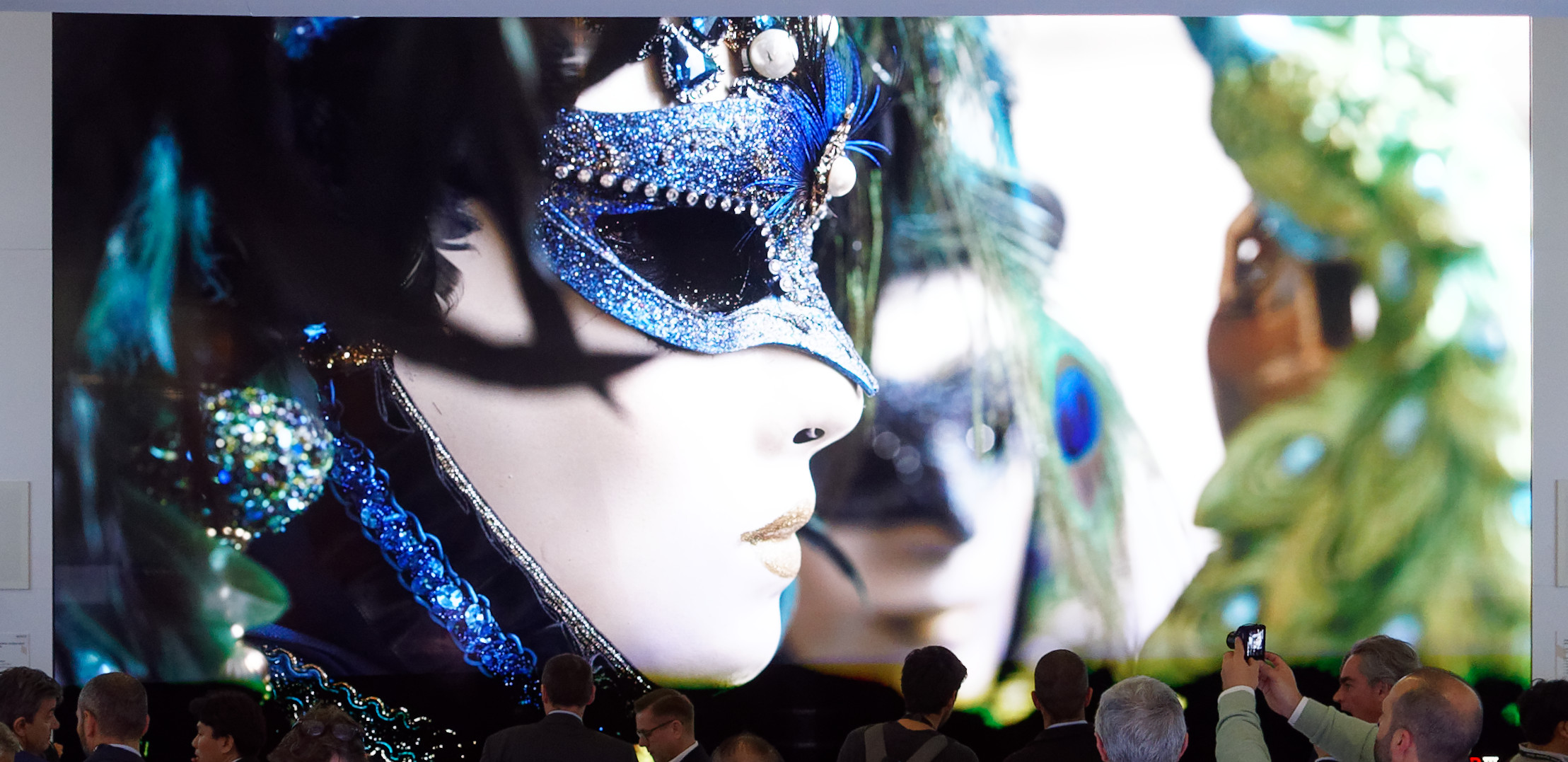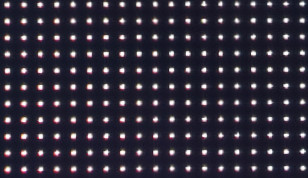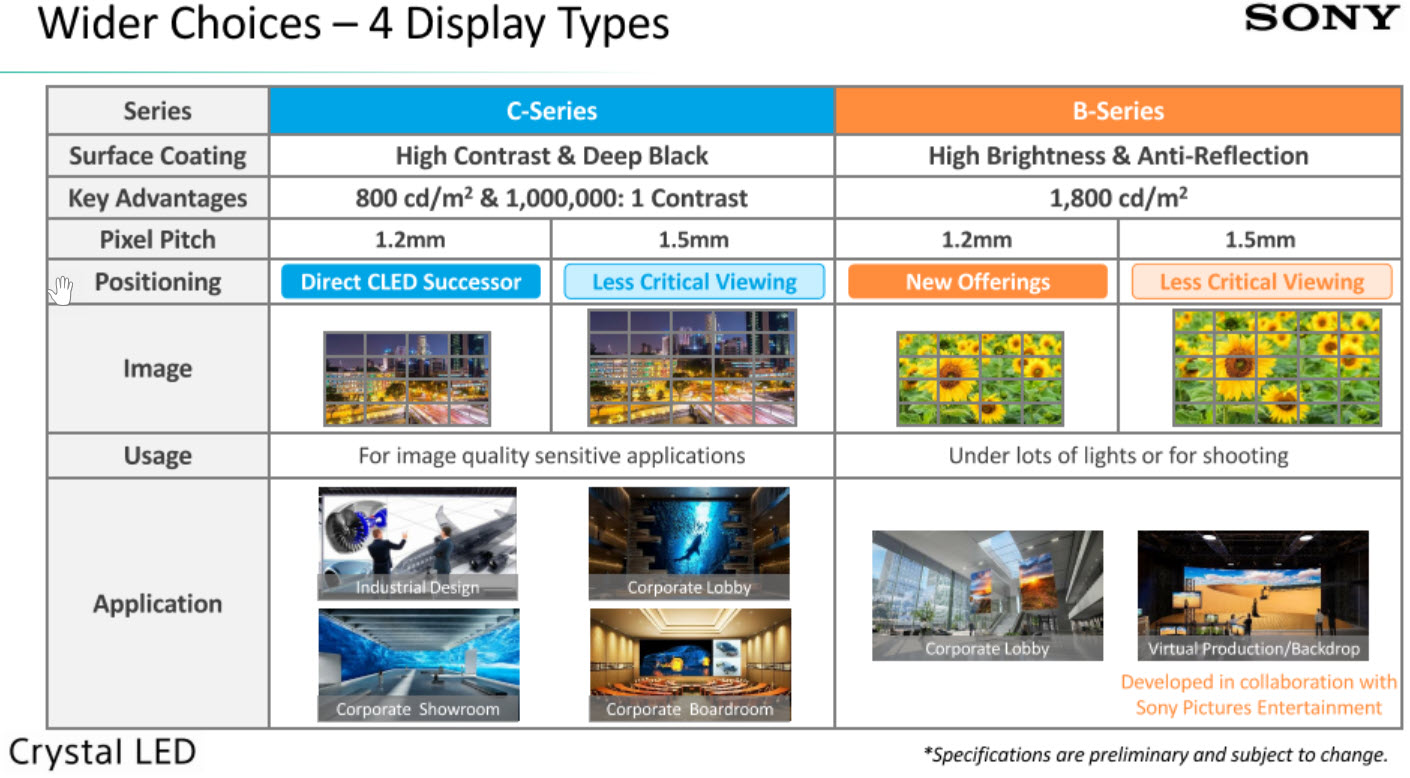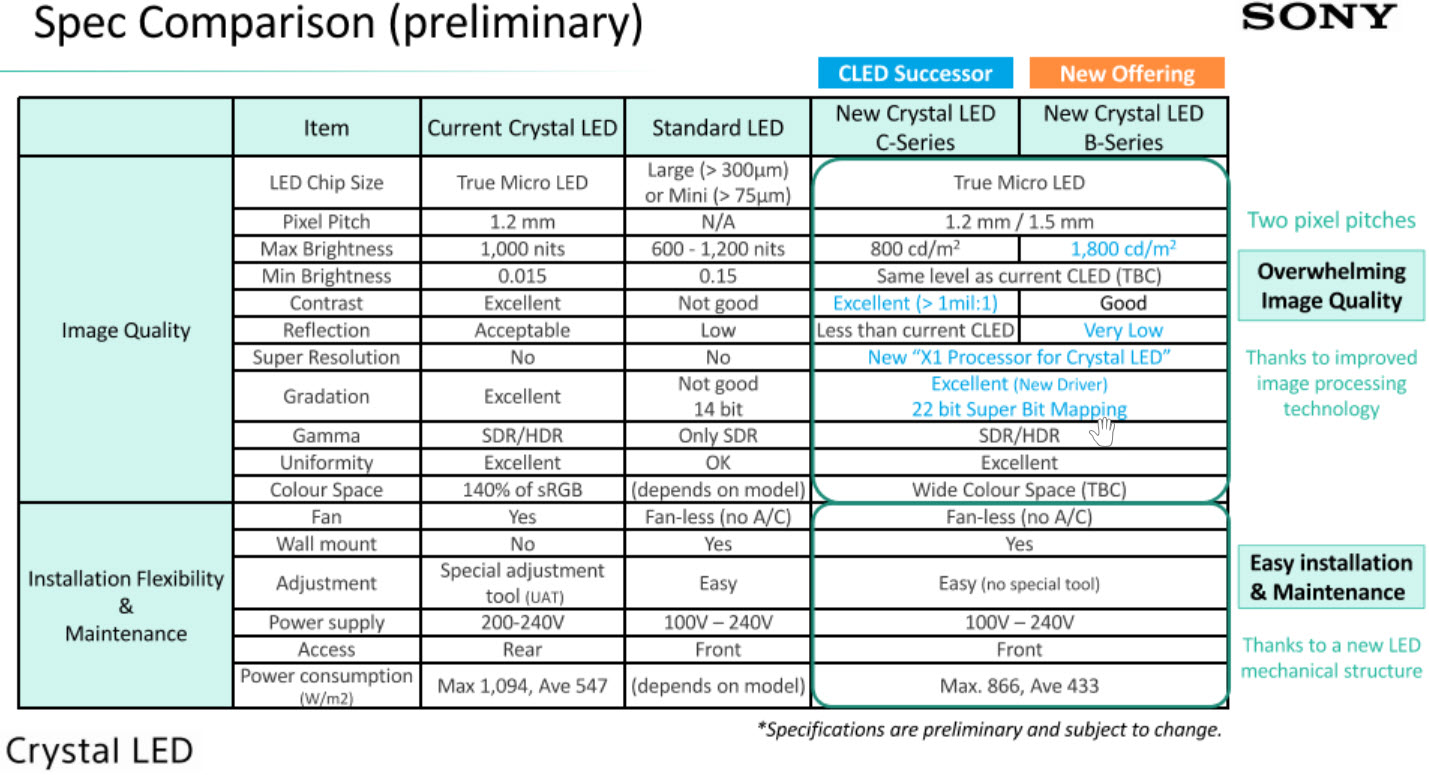Sony has released a major upgrade to its CLED or Crystal LED LED displays. Although the European launch is a day later than the rest of the world, we were lucky enough to get a pre-briefing from the firm before the holiday.

Sony’s technology was a real game changer. At Infocomm in 2016, the display technology was announced, and by lunchtime on the first day, the Display Daily team at the event was already convinced that the display would be the ‘best in show’, even though we hadn’t seen most of the displays at the show. I went back to the booth multiple times, but really struggled to get an image of the display that did not have people in front of it (although I got a close up as you’ll see later). From opening time to closing time, the booth saw lots and lots of viewers.
 I took this picture of Sony’s CrystalLED at ISE 2019. Image:Meko Click for higher resolution.
I took this picture of Sony’s CrystalLED at ISE 2019. Image:Meko Click for higher resolution.
The key technology was the use of a very small LED chip that meant that 99% of the surface of the display was not LED. Normally, the LED occupies much of the space of the pixel and that means that light is reflected and influenced by the lens on the LED. By using a very small LED and having a lot of black, Sony was able to get a really great black level. I have seen the displays ten or twelve times at trade shows and Sony Professional’s HQ in the UK at a private viewing and I can safely say that in the four years, I haven’t seen any display as good in image quality. It has the black levels of OLED, but with the high colour volume of the best LCDs or three imager projectors. That’s the reason that so many are chasing microLED technology.
However, there were a number of downsides of the first version of the display.
- First, it was very expensive. That has limited the market size and prevented Sony bringing it into several applications. For example, it showed the technology at CinemaCon in 2017, but has never introduced it to cinema.
- Second, the display was quite reflective. At trade shows, Sony was able to arrange for the right lighting for the display to look good, but in real world applications it’s not that easy. At IBC, someone opened a door that let in light and that really showed the challenges of reflections.
- Third, part of the expense was the difficulty of installing the modules. The alignment was tricky and critical to getting a seamless look to the image.
- Fourthly, there was only one version of brightness that was more suitable for darker environments, so for higher ambient conditions the display might not have been suitable.
- Finally, the LED had to be maintained from behind the LED, limiting where the display could be installed.
New Versions of Crystal LED
So Sony has developed two different series of LEDs for the system. As well as the original 1.2mm pitch version, there is now a larger pitch version which can be used for larger displays with a specific resolution or for lower cost installation (although Sony has not given us any idea on the planned cost reductions). There are two different brightness settings available, with a peak brightness of 800 cd/m² or YYY cd/m².
Given that the panels have the same power consumption, we asked if that meant that the difference between the two displays was just a contrast enhancement filter and that was confirmed (we assume that the lower brightness version has a circular polariser filter, which would reduce the brightness by around 50%). Each module has the coating. Sony told us that getting the filter to be uniform across multiple modules is tricky and that the firm has a proprietary matching technology to ensure good uniformity.
Addressing the other issues:
- The higher brightness and larger pitch versions ought to be cheaper, although Sony wouldn’t give us any pricing details. Typically LED cost depends on the number of LEDs rather than the area. The firm has also developed a new single processor which makes configuration simpler (and, of course, allows Sony to apply its understanding of video processing, where most LED displays are driven by just a very limited range of controllers and driver chips, making differentiation difficult).
- Sony had already improved the reflectivity during the life of the original version, and that performance is carried forward to the brighter B Series display. The C Series, on the other hand, has ‘much less’ reflection.
- The modules have been redesigned to used better mechanical fixings which allows much quicker set-up, which will also help with costs. There is a 27″ 16:9 cabinet that is 76mm thick. We heard that the installation should take a third of the time – with a set up time of ‘less than a day’ for a 220″ UltraHD display put up by two operators. We asked about auto calibration, but it seems that it is operator-based (by eye or using a colorimeter) at the moment, but was developed by staff from the broadcast monitor division that have very high expectations on uniformity and calibration.
- The C Series has 800 cd/m² of output, whether the pitch is 1.2mm or 1.5mm. The B Series has 1,800 c/m² of output. (This level of brightness at this pitch is very unusual and we asked if common cathode technology was being used, but again there was no detail available).
- The new mechanical design allows access from the front of the display which makes the installation more flexible and without needing any special air conditioning or cooling behind. To deal with any batch variations if any modules need replacing, extra calibrated modules are provided at the time of installation for later repairs.
Looking at other issues, the display is quoted as covering the P3 gamut, although the coverage of Rec. 2020 is not yet defined. That has been important as a good market for CLED has been virtual TV and movie production. Especially in these times of Covid, outside broadcasts and special set construction are particularly difficult, which makes virtual backdrops really useful. Of course, the high quality processing means that the LEDs can be run to produce good image quality with low overall brightness to allow easy switching between daylight and night time settings. (Good low grey scale performance is also important in simulation applications). Typically, backdrops are designed to get good highlight exposure, with adjustment in post production.
The controller supports 22 bit mapping and 120Hz refresh as well as database-based scaling and arbitrary resolution scaling. It also supports Sony’s Motionflow technology. We heard that the Mandalorian, a big Covid hit, was produced using an LED backdrop.
Accurate colour, although usually sRGB/Rec. 709 is in virtual product design, especially in the automotive industry (e.g. Honda & Mitsubishi) which can accelerate product development and reduce cost by using full size images of proposed models and designs.
 I took this picture from close up (and with a good lens & camera!) of the CLED at Infocomm 2016. It shows how small the area of the LED was compared to the rest of the pixel. Image:Meko
I took this picture from close up (and with a good lens & camera!) of the CLED at Infocomm 2016. It shows how small the area of the LED was compared to the rest of the pixel. Image:Meko
With the earlier CLED, Sony was quoting a 99% area for the non-display area, but although it is still ‘high’, the firm is not quoting it for the new LEDs. That suggests strongly to me that it has moved to bigger LEDs to achieve the higher brightness output, relying on the polariser film to achieve the high level of contrast.
I’m hoping, as I live quite close to Sony Professional, that at some point when restrictions ease, I may be able to visit to see the new display. (BR)



